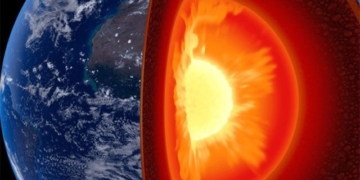Intense Solar Radiation Could Cause Comet 323P/SOHO to Disintegrate and Develop a Long Dust Tail.
Astronomers are using a variety of ground-based and space telescopes to capture images of the comet 323P/SOHO as it breaks apart near the Sun. “This is the first time such a comet has been observed in the process of disintegration, which may help explain the scarcity of comets near the Sun,” the National Astronomical Observatory of Japan (NAOJ) announced on June 15.

Comet 323P/SOHO observed by the Subaru Telescope on December 21, 2020 (left) appears as a dot, while the CFHT telescope captured it on February 11, 2021 (right) with a long tail. (Image: Subaru Telescope/CFHT/Man-To Hui/David Tholen)
Many comets near the Sun are difficult to detect and track due to their unusual orbits that bring them closer to the Sun. Scientists are working to understand why they do not encounter many comets of this type.
To gain a better understanding of comets near the Sun, a team of astronomers from Macau, the United States, Germany, Taiwan, and Canada observed 323P/SOHO using multiple telescopes, including the ground-based Subaru Telescope, Canada-France-Hawaii Telescope (CFHT), Gemini North Telescope, Lowell Observatory’s Discovery Telescope, and the Hubble Space Telescope.
323P/SOHO exhibits significant differences before and after its approach to the Sun. When Subaru first detected this comet in December 2020, it resembled a dot. However, images from early 2021 show that it developed a long dust tail.
The research team believes that intense radiation from the Sun causes many parts of the comet to break apart due to thermal cracking, similar to how ice cubes crack when hot water is poured over them. This mass loss mechanism may help explain what happens to comets near the Sun and why so few remain.
The research team published their findings in the Astronomical Journal on June 14, describing comet 323P/SOHO as being “burned to death.”
323P/SOHO is a peculiar object. It rotates very quickly, completing a rotation in just over half an hour, and its color is unlike anything else in the solar system. Currently, the astronomers want to conduct further observations to determine whether other comets near the Sun share similar characteristics.


















































